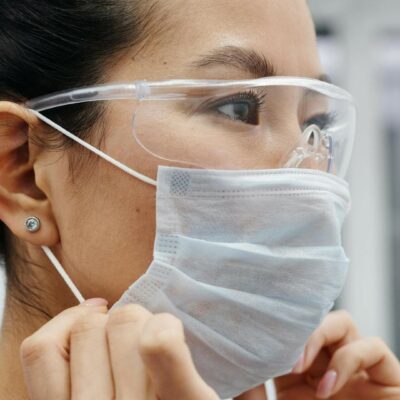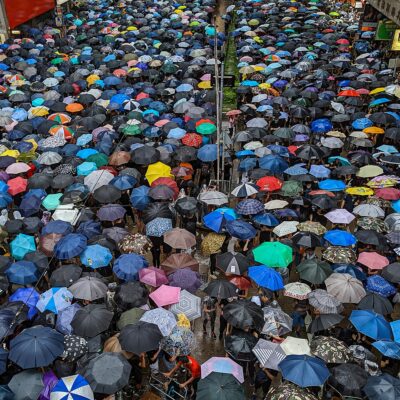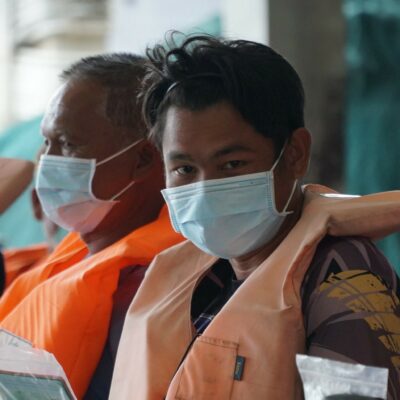2020 is the final year in the People’s Republic of China’s Thirteenth Five-Year Plan, the blueprint for economic development in the ‘New Era’ of current President Xi Jinping.
When the plan was first disseminated in 2016, the attainment of the Confucian ideal of xiaokang – a term that official translators reduce to ‘moderately prosperous society’ – was promoted as the ambitious goal for the plan. However, none had anticipated the disturbance caused by COVID-19 and the economic ramifications of the global pandemic.
Xiaokang indicates the culmination of a significant step in the development paths of Confucianism, Marxism, and ‘socialism with Chinese characteristics’. The importance of reaching this goal on schedule has been highlighted by current official discourse on the need for a double victory against the virus and poverty.
Contemporary dreams of xiaokang may have departed from historical visions, but the use of the concept remains politically advantageous for the Chinese Communist Party (CCP) in these troubled times.
The developing ideal of a xiaokang society
Xiaokang has a long history as a Confucian concept from its early appearance in the Book of Rites, a volume that scholars compiled during the Han Dynasty (206BC – 280AD) as a collection of earlier writings. In this seminal classic, the term appeared as an important societal step on the path to the utopia known as datong. Although official translations now define the term as ‘moderately prosperous’, earlier translators did not always look so favourably on xiaokang–describing it as ‘small tranquility’ or ‘lesser tranquility’ in English, while in French Séraphin Couvreur (1835–1919) wrote of it as imperfect tranquility (tranquillité imparfaite).
In the Book of Rites, xiaokang was imagined as a past age–and future possibility–in which everyone had enough to live comfortably, but the people were motivated and rewarded by selfishness and nepotism. It was an age in which the people were ‘moderately prosperous’ due to private ownership before the great communalism known as datong. In this respect, xiaokang indicates a very important step to showcase the achievements of the Chinese Communist Party–connecting the current government with the ideals of China’s past and therefore emphasising the legitimacy of the Party and its plan.
In the early twentieth century, after the influential thinker Kang Youwei revived the concept in a modern setting, it was picked up by revolutionary intellectuals. The communist utopia was equated as datong, with xiaokang as an important step on the path to complete societal liberation. Not satisfied with the Eurocentric systems of knowledge that were crashing upon China’s shores, Kang had returned to Confucian knowledge and adapted it to suit contemporary needs, as it had been adapted many times before. The communist path to utopia began using the terminology of the Confucian path to utopia. The Chinese communist revolutionary Mao Zedong appreciated Kang’s use of these Confucian terms, but it was Deng Xiaoping who as China’s leader in 1979 positioned xiaokang as a specific point in China’s modernisation and a specifically Chinese goal in this process.
The concept played a legitimising discursive role in China’s turn towards marketisation that began after the Cultural Revolution. Xiaokang proved to be a convenient way for Party leaders to discuss the adoption of capitalist methods without using any of the terminology–a terminology that would have indicated a break from the Party’s ideology.
The century-long process of the modern development of the concept of xiaokang is therefore the appropriation of a Confucian utopian teleology into a quasi-socialist or revised socialist teleology. It is an important part of what President Xi likes to call ‘socialism with Chinese characteristics’. Many justly question the practice of ‘socialism’ found in ‘socialism with Chinese characteristics’, but the discourse of socialism is certainly still strong and many of the socialist institutions for economic development have remained in place and continue to have meaning.
The current Five-Year Plan
The Five-Year Plan that highlighted xiaokang as the goal for 2020 has its roots in Leninism. Five-year plans have been an important part of Leninist systems since Stalin implemented the Soviet Union’s first plan in 1928. China then turned to the model a few years after the 1949 victory of the CCP in the Civil War. The first plan, for 1953-1957, proved to be extremely successful due to the immediate advantages of collectivisation, post-war economic rebound and substantial Soviet support. Since then, the success or failure of these plans has been an important gauge of the correctness of the Party line. And this is one of the reasons that fulfilling the five-year plan is crucial for current leadership.
In 2016, just three years after Xi’s dramatic rise to power, he announced the ambitious five-year plan for the country to become a ‘moderately prosperous society’ in all respects (quanmian xiaokang shehui) by 2020. This explicitly linked China’s newest five-year plan to what was not yet called ‘Xi Jinping Thought’.
Building a moderately prosperous society in all respects (or comprehensively) was the first of Xi’s ‘Four Comprehensives,’ which were officially announced in 2014. The elegant and traditional concept of xiaokang has since been a cornerstone of the CCP’s economic planning. It figures prominently in all recent Party discourse, appearing an impressive 18 times in Xi’s dramatic speech at the Nineteenth Party Congress in late 2017.
Domestically, the term has become emblematic of both Xi’s and China’s rise in the twenty-first century. However, as the deadline for the attainment of this goal approaches, COVID-19 has posed an unprecedented economic difficulty for China. Much of the country has suffered under lockdowns and the entire world has experienced a dramatic drop in consumption.
Xiaokang is then a goal that spanned across millennia of Chinese history, a goal of one hundred years of Party rule, a goal of the current Five-Year Plan, and a goal of one leader’s tenure. Meeting this goal is crucial for the CCP.
Will China achieve xiaokang amid the turbulence caused by COVID-19?
The Chinese Communist Party has used military terminology to frame the COVID-19 response. This discourse mirrors the decisive battle (juezhan) to reduce poverty, a war that necessitates the support and sacrifice of the entire country as China’s poorest citizens are elevated to a level comparable to the rest of the people. Since the war with Japan – a moment that crystallised modern Chinese nationalism – the CCP has utilised such military terminology to inspire a nation-wide patriotic response and to demonstrate the importance of particular movements or policies. Party leaders have often referred to xiaokang as ‘the target of a century of struggle’, indicating the hundred years that have passed since the inception of the CCP in 1921. Recent discourse has included the attainment of xiaokang in ‘double victory’ (shuang shengli) with a more recent goal: victory over the COVID-19 epidemic.
Although the extent of the economic impact remains unclear, this global pandemic will undoubtedly result in unprecedented economic difficulties. China’s political and intellectual leaders have been quick to address this and have particularly given thought to the pandemic’s influence on China’s attainment of the goals set out in 2016’s Five-Year Plan.
In the 16 March 2020 edition of Qiushi (Seeking Truth–the CCP’s journal on theory guiding China’s development) the National Development and Reform Commission 中共国家发展改革委党组 offered an official statement to address the question of China’s ability to reach the 2020 target of xiaokang. The goal remains steadfastly in place. And the rhetoric at least is up to the challenge:
‘The mission to comprehensively establish xiaokang society is glorious. The responsibility is great and the task ahead is arduous. Although the new coronavirus epidemic presents new challenges to this goal, if we make these pressures into motivations, if we remake crisis as opportunity…. only then will we be able to realise this goal for the economy and society that has been entrusted to us to achieve this year.’
The goal is largely symbolic, but the Five-Year Plan also outlined a wide range of more specific targets that would need to be met in order to achieve xiaokang. Some of these have already been achieved.
According to both official statistics and World Bank data, China’s GDP has likely surpassed $USD10,000 per person, a 25% increase over the 2016 levels, when the Thirteenth Five-Year Plan was drafted and outlined annual growth targets of 6%-7%. Other targets of improved infrastructure, a modernised agricultural system, a cleaner environment – particularly an emphasis on ‘green’ energy – and a renewed commitment to technological innovation have been realised to varying degrees. However, issues of inequality, particularly in rural areas, indicate that attainment of xiaokang society has not been ‘comprehensive’ across the country.
Han Changfu, the current Minister of Agriculture and Rural Affairs, has highlighted difficulties that the pandemic has posed to the government’s efforts to resolve the Three Rural Issues (challenges related to agriculture, farmers and rural areas)–all problems of economic inequalities that the Party has been working to alleviate since the time of Hu Jintao. Recent years have seen economic investment in the increased industrialisation of farming, as well as reforms to agricultural finance and rural education, but the Party is struggling to ensure that the pandemic does not stop these reforms.
As in other countries, the pandemic and its economic fallout will be particularly difficult for those affected in poor and rural areas. With the desire to eliminate poverty already focused on these rural areas across China, further resources have been deployed for disease prevention. And, according to Han, plans for increasing employment opportunities and raising incomes have been stepped up in order to ‘ensure that in the year of attaining a xiaokang society in all respects, the drive towards increasing rural incomes does not suffer a reversal’. Increasing rural incomes was one of the key goals for agricultural reform outlined in the 2016 plan as part of the attainment of xiaokang and, although May editorials from Qiushi indicate that the CCP remains unwavering in its resolve to fulfill this ‘solemn commitment to the people’, it remains difficult to gauge success in alleviating rural poverty.
Double victory?
Positing the attainment of a mysterious and poorly defined 2,500-year old concept as the economic goal for the largest country in the world is a smart move. Alleviating poverty is a noble cause inspired by the most human values of socialism, but the concept of xiaokang is not limited to this goal and excels due to its ambiguity.
With few concrete or objective measures to define the concept, and with the ability to alter and reduce expectations while maintaining faith in Party leadership, it is likely that 2020 will still mark the fulfillment of the Thirteenth Five-Year Plan.
Of course, only those in control of the discourse will know when society has arrived at xiaokang. And they will undoubtedly let us know.
Image: China’s President Xi Jinping. Credit: UK Foreign Office/Flickr




